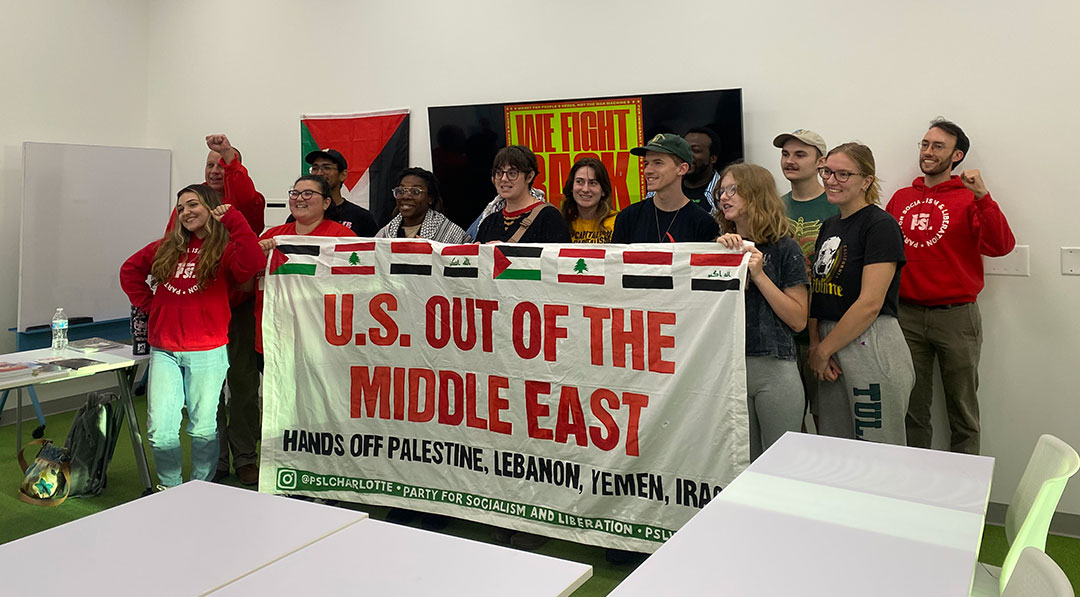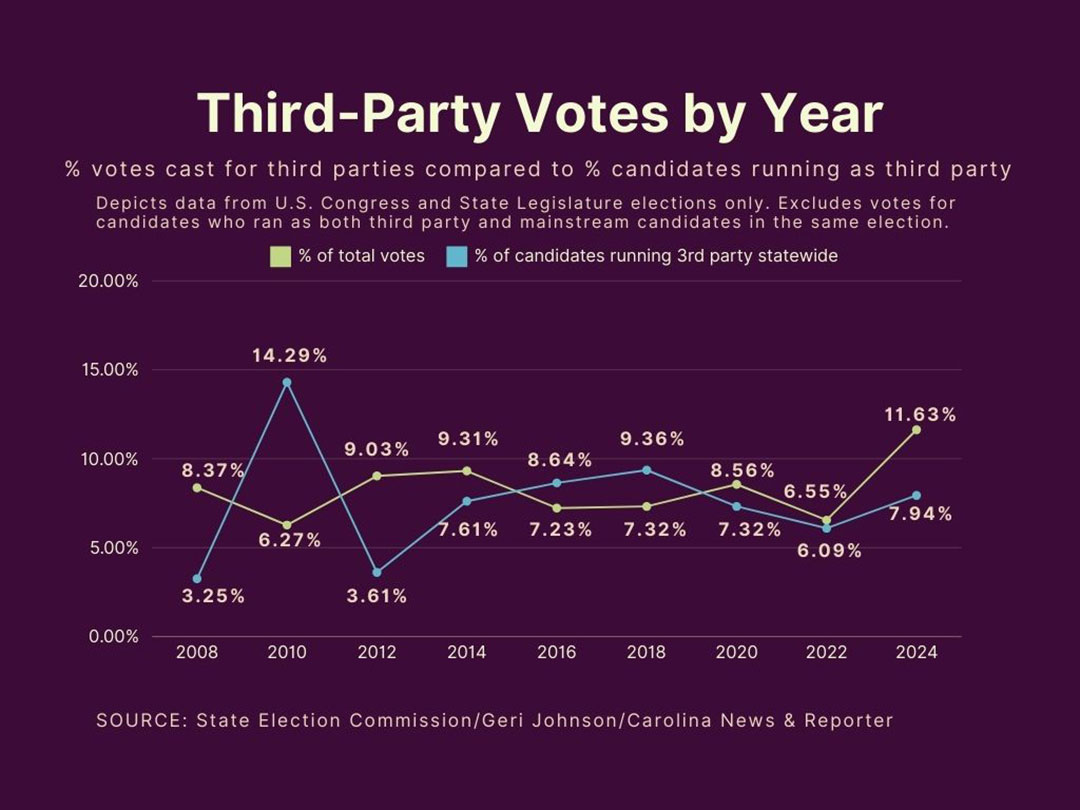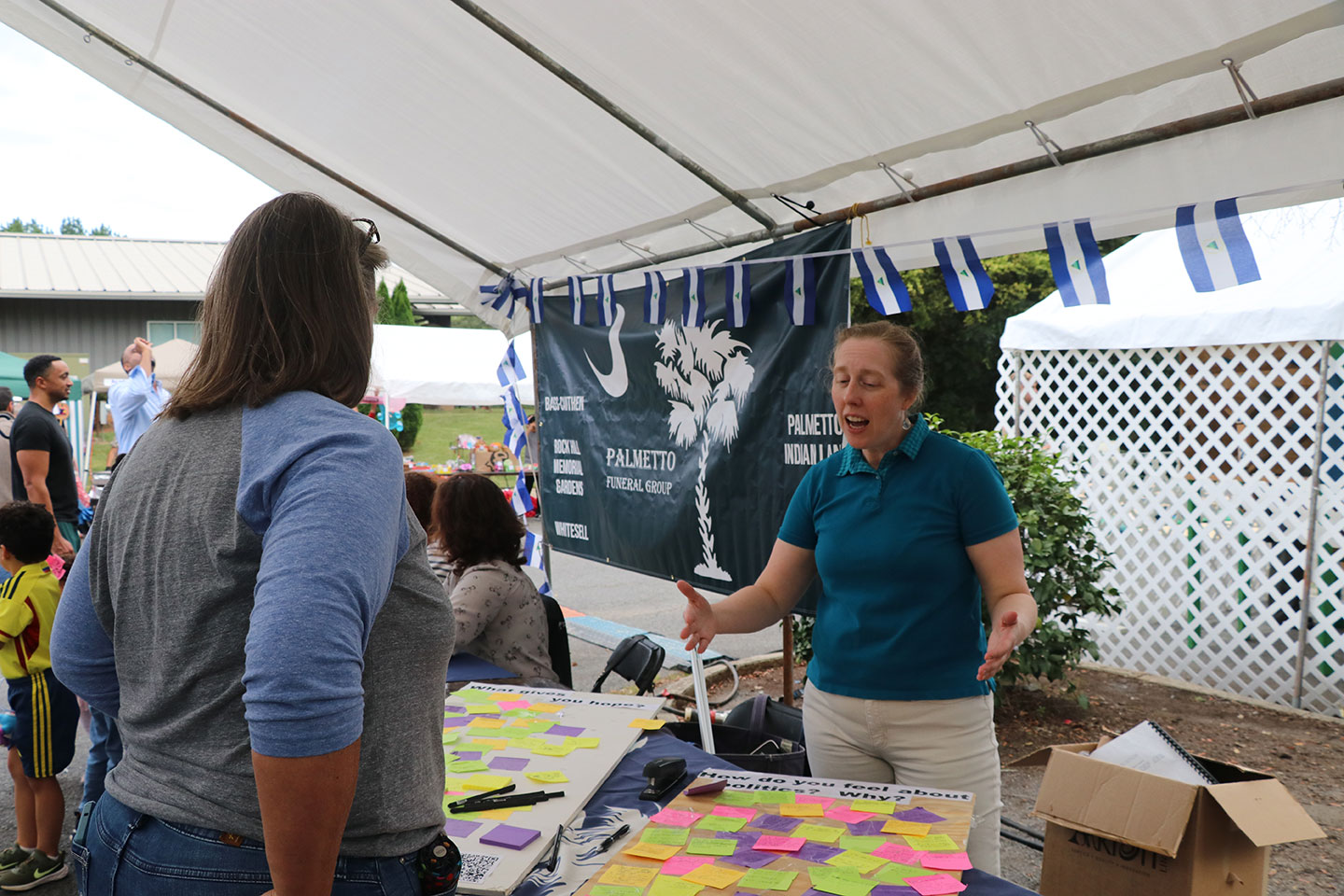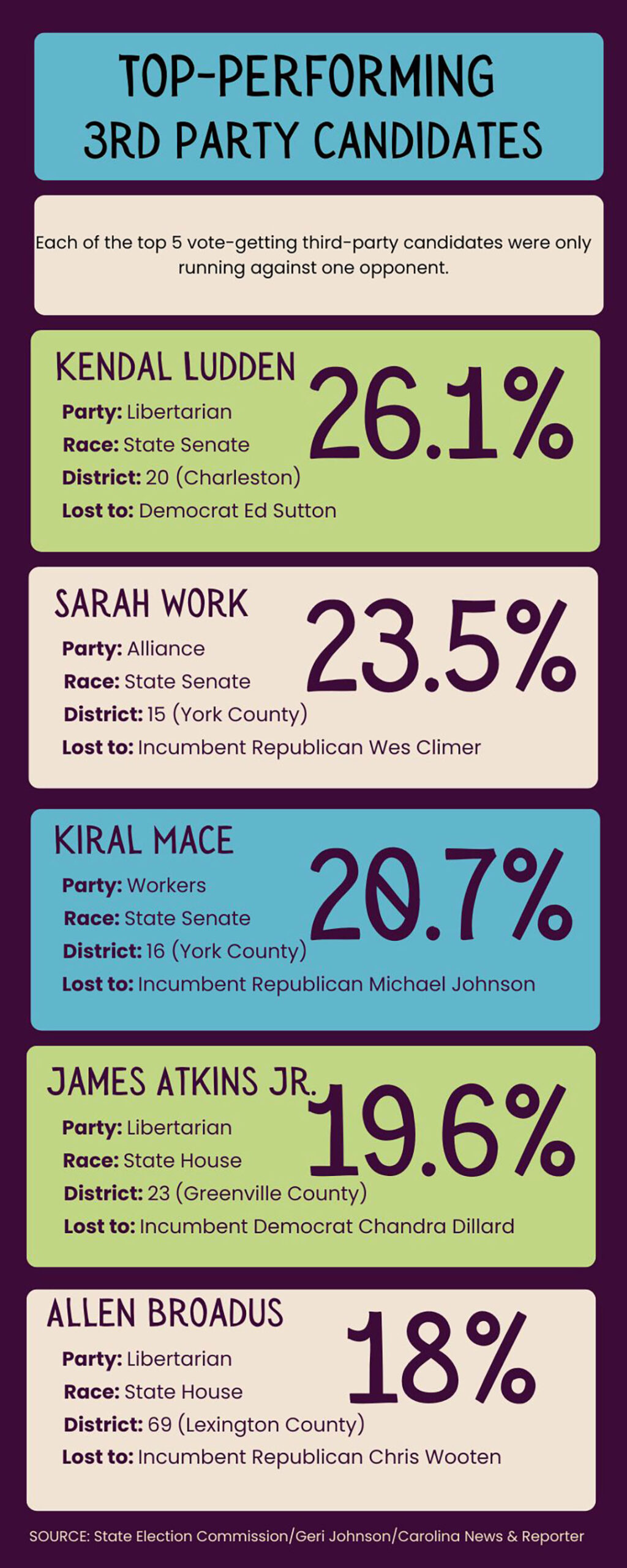The Party for Socialism and Liberation worked with the Workers Party to put presidential candidate Claudia De la Cruz on the ballot in South Carolina. (Photo by Geri Johnson/Carolina News & Reporter)
South Carolina third-party candidates in legislative and congressional races saw a spike in the percentage of votes cast for them this election season.
The candidates with the biggest portions of the vote were the ones running against only one other opponent.
Third-party candidates for the S.C. General Assembly this year received 56,445 votes, consistent with the number from the previous 2020 general election. But the percentage of total votes for third parties cast in legislative races across the state increased by 3 percentage points.
Harold Geddings is state chairman of the South Carolina Workers Party, which pushes for higher wages and infrastructure investment. The candidate for District 93 in the state House of Representatives said his party had a successful election season.
“We did everything we set out to accomplish,” Geddings said. “I’m pleased with the outcome. We didn’t win anything, but that wasn’t the point. I mean, the point was to get our names out there and start the process of growing the party, and mission accomplished on that.”
Geddings received only 1.82% of the vote. But Kiral Mace, a Workers Party candidate running for the House in York County, received 20.72% of the vote in a two-way race against the Republican incumbent.
The Workers Party was not alone in its success.
Also in York County, Senate candidate Sarah Work received 23.48% of the vote in her bid for the District 15 position. Work ran with the Alliance Party, which advocates for government financial transparency.
“I feel like things are moving in the right direction,” Work said. “For a third-party independent candidate running in her backyard, I think I did pretty well.”
Geddings said the Workers Party’s strategy moving forward will be informed by the results of this election. He plans to join forces with other parties that have similar values, such as the Party for Socialism and Liberation.
“If you look down the list of all the elections going on, there’s so many of them that were uncontested,” Geddings said. “Well, that’s where we come in, you know? We’re not going to let you run unopposed.”
Geddings said the Workers Party wants to provide a “ballot access line” for leftist parties, such as the socialists, who want to run candidates.
This election season was the first time the Workers Party employed that strategy. Presidential candidate Claudia de la Cruz ran with the Socialism and Liberation party, but she was on the South Carolina ticket as a Workers Party candidate.
“I’m very optimistic of that part of the strategy going forward, because this was our way of proving that it can be done,” Geddings said.
Third-party congressional candidates received few votes but felt like more voters were paying attention to their message.
Michael Simpson ran as a Libertarian in the U.S. House District 6 race. He received 1.73% of the vote in a race against four other candidates.
“It’s really, really difficult to (get a) break (with) two parties at once, let alone five parties at once, which is what I was dealing with,” Simpson said. “But when it’s only a two-way race, you’re going to have some very dissatisfied people that are more open to listening to another view.”
Joseph Oddo, another Alliance Party candidate running in the 6th District, said the party did well recruiting voters.
“We had successes in platform development,” Oddo said. “As independents, we’re not going to turn people over and flip them right away. We tried to make the point that this is a long-term strategy.”
Oddo plans to continue working for Better Ballot SC, which advocates for voting reform in South Carolina. Better Ballot pushes for instant-runoff voting and ranked-choice voting.
“This is not a one-dimensional thing,” Oddo said. “Running for office is just a compliment to the advocacy that we work on.”
Simpson, who was a first-time candidate, is unsure if he will run again. But he plans to continue his work talking to voters and spreading his party’s message.
“Life is multiplication through division,” Simpson said. “It’s really one person spreading the message and then getting another person to agree with that. And then two people spreading the message, and it’s four people, and then it’s eight. It takes time to actually make a message be heard.”
Data represents state and federal legislative races in South Carolina since 2008. Note: The spike in 2010 is due to the U.S. House District 1 race, which had five third-party candidates running.
SOURCE: SC Election Commission
Sarah Work manned a table at an International Festival in Rock Hill in September to connect with voters. (Photo by Geri Johnson/Carolina News & Reporter)





